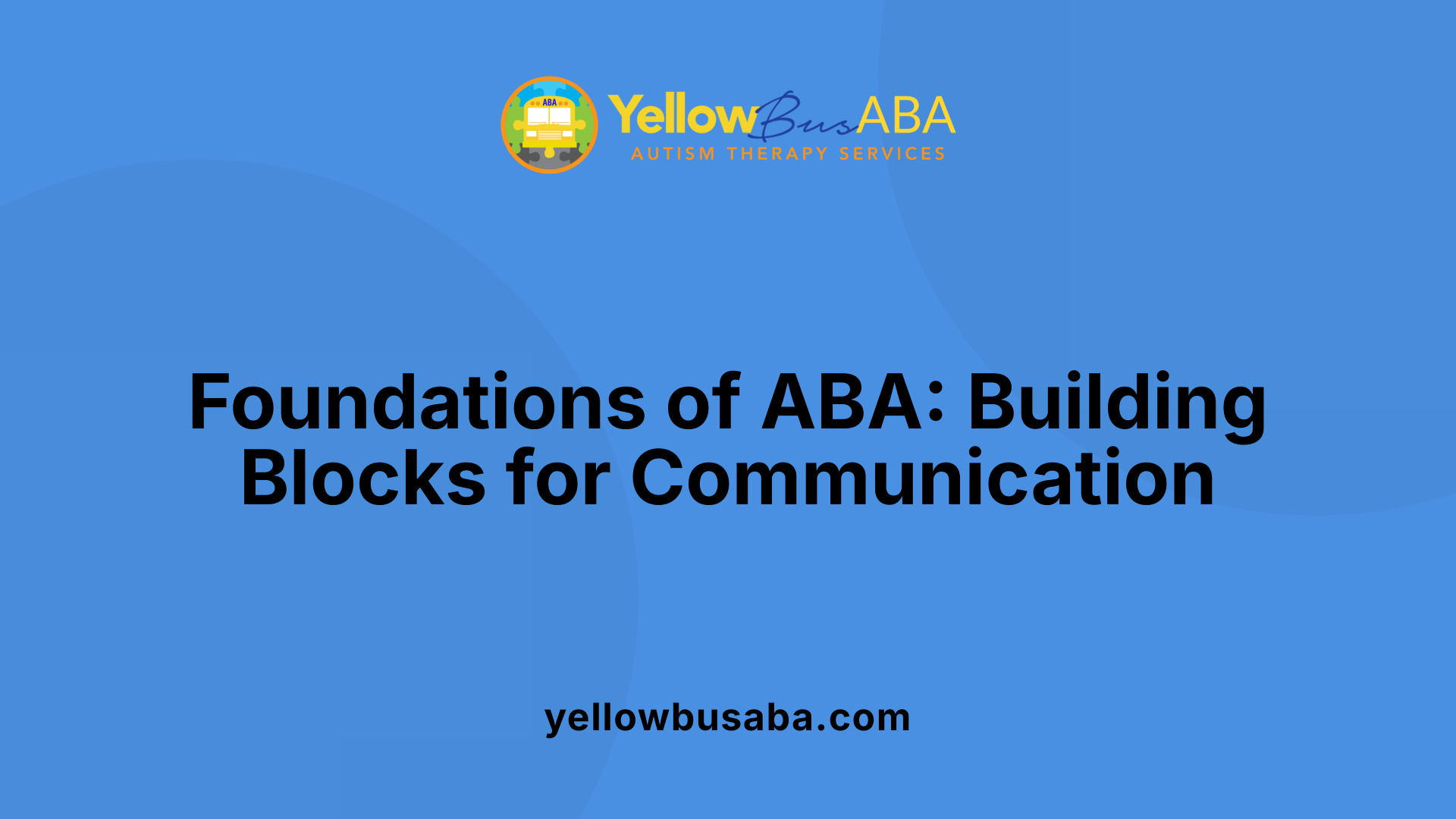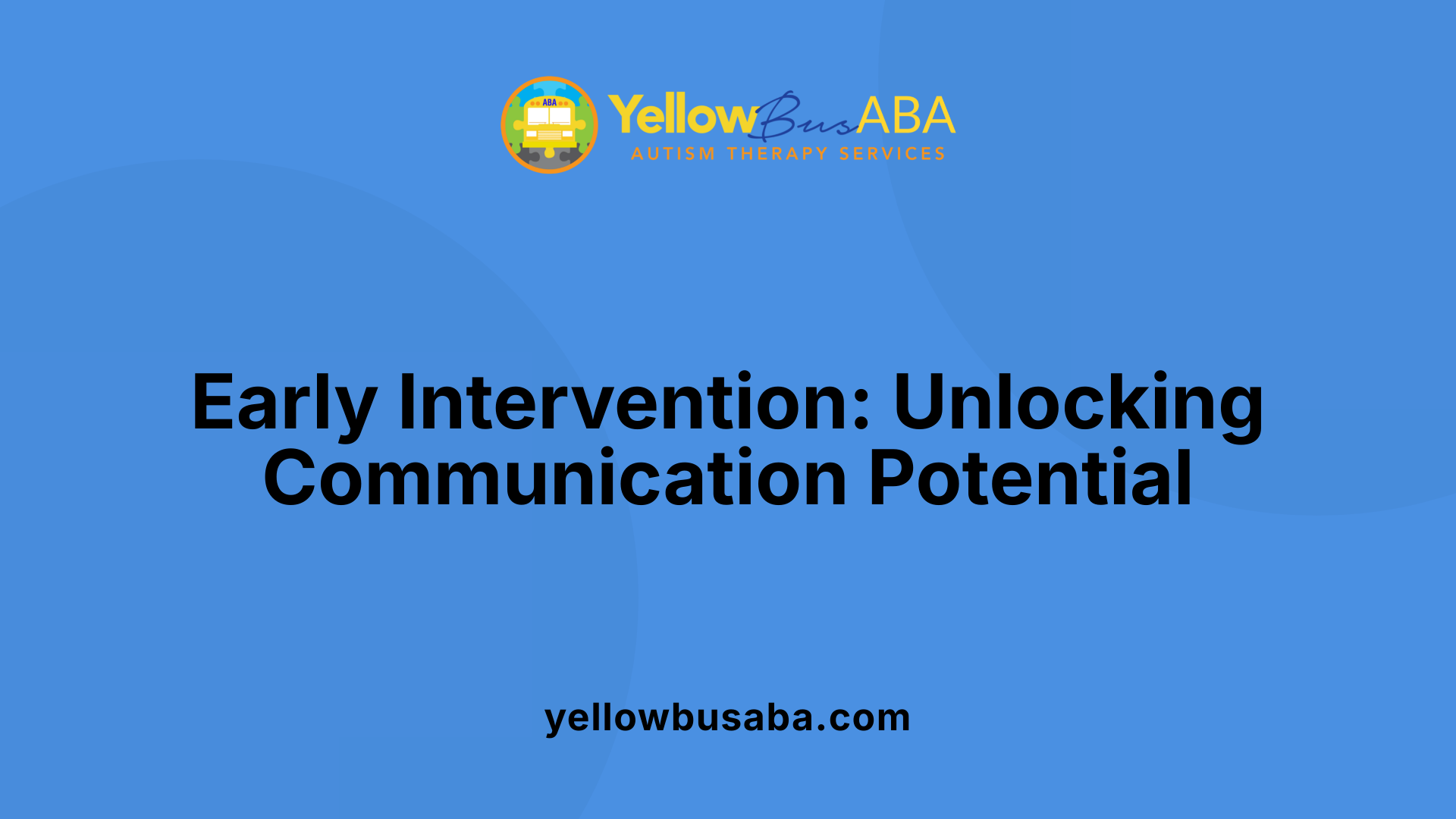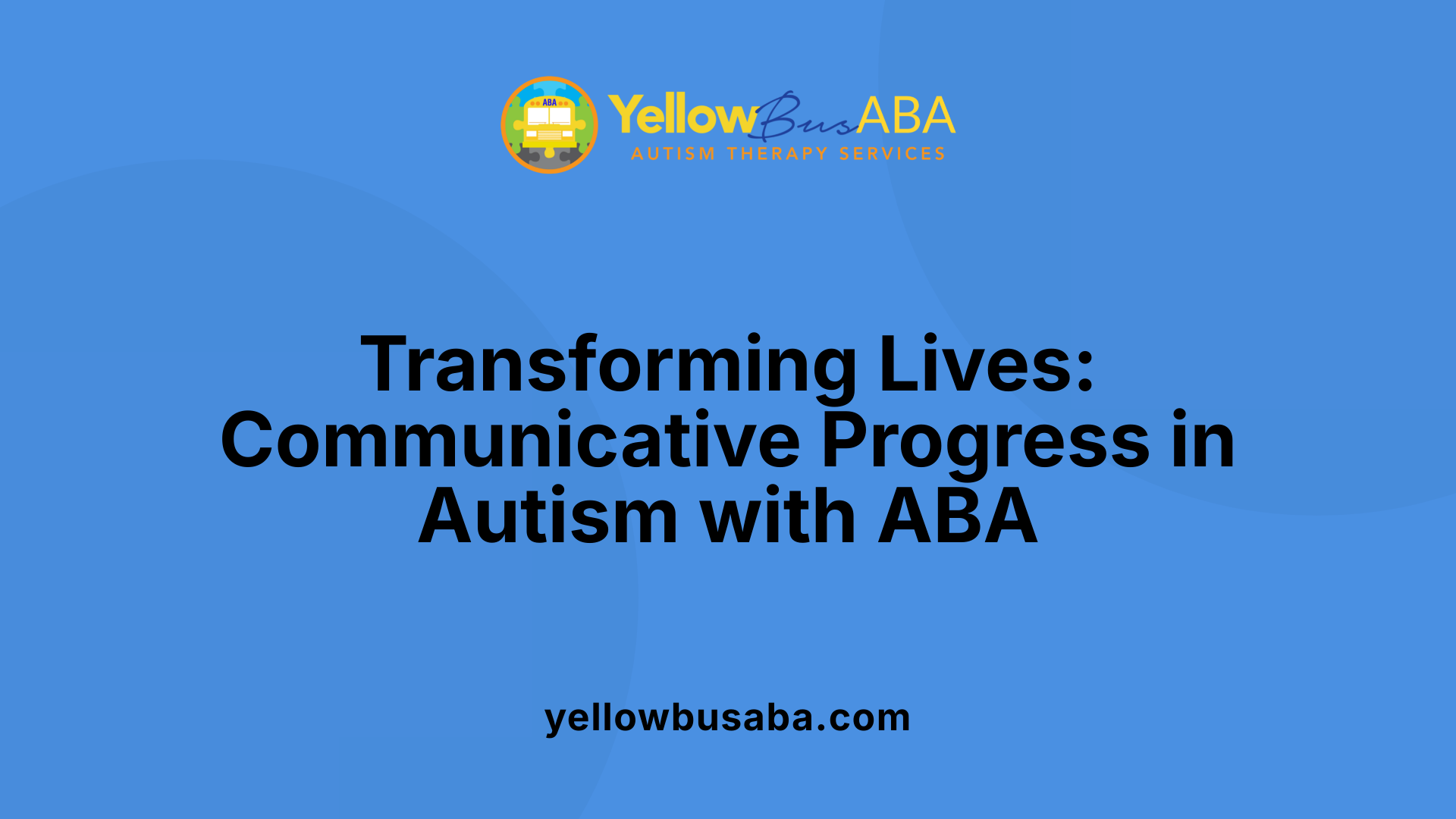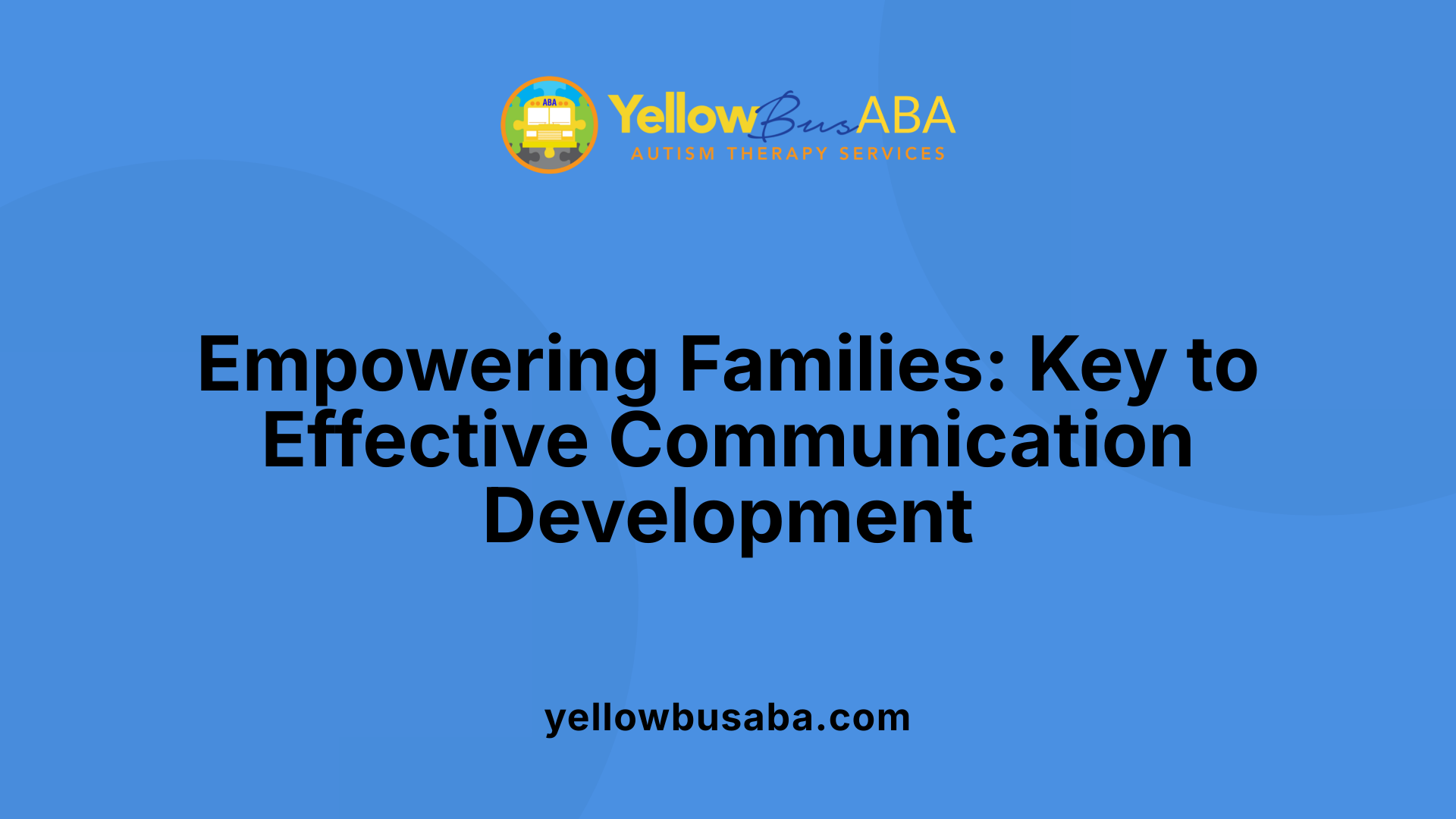Understanding How ABA Therapy Enhances Communication Skills in Children with Autism
Applied Behavior Analysis (ABA) therapy is a scientifically validated approach widely recognized for its effectiveness in developing communication skills among children with autism spectrum disorder (ASD). By employing evidence-based interventions and tailored strategies, ABA helps children learn to express themselves, understand others, and engage meaningfully in social interactions, ultimately improving their quality of life.
Core Principles of ABA and Communication Development

What are common techniques and methods used in ABA therapy to improve communication?
ABA therapy uses a variety of structured strategies to develop communication skills effectively. Discrete trial training is a core method, breaking down skills into small, manageable steps and teaching them systematically. Therapists also utilize modeling, where they demonstrate desired behaviors or language, and prompting and fading to encourage independence by gradually reducing assistance.
Positive reinforcement plays an essential role, rewarding children whenever they demonstrate successful communication to motivate repetition and mastery of skills.
In addition to these behavioral techniques, ABA incorporates augmentative and alternative communication (AAC) devices to support non-verbal children. These include the Picture Exchange Communication System (PECS), speech-generating devices (SGDs), and communication boards, which help children express needs and desires effectively.
Other methods such as natural environment teaching (NET), chaining, shaping, and script fading foster adaptability and generalization, enabling children to use communication skills across different settings.
Verbal Behavior Therapy (VBT) within ABA categorizes communication into functional operants like mands (requests), tacts (labels), and intraverbals (conversational exchanges). This approach helps target specific language functions that are essential for social interaction.
Overall, ABA therapy’s individualized and evidence-based methods focus on systematically teaching communication skills, making it a comprehensive approach to supporting children with autism in developing functional, spontaneous communication.
Techniques and Strategies in ABA for Communication Enhancement

What are common techniques and methods used in ABA therapy to improve communication?
Applied Behavior Analysis (ABA) utilizes a variety of evidence-based techniques to enhance communication skills in children with autism. These methods are structured and tailored to each child's unique needs, ensuring effective learning.
One of the foundational techniques is Discrete Trial Training (DTT). DTT involves breaking down complex communication tasks into simple, manageable steps that are taught systematically through repeated trials. This approach helps children acquire new skills such as requesting or commenting.
Modeling and imitation are also vital. Therapists demonstrate desired behaviors, encouraging children to imitate actions and sounds, which can lead to vocabulary expansion and improved pronunciation.
Prompting and fading are techniques used to initiate desired behaviors. A prompt—such as a gesture or verbal cue—is provided to encourage a child to communicate. Over time, prompts are gradually reduced (faded) to promote independent responses.
Natural Environment Teaching (NET) involves embedding communication opportunities in everyday routines and play settings. This approach helps children generalize skills across different contexts and promotes spontaneous communication.
Augmentative and Alternative Communication (AAC) devices, such as Picture Exchange Communication System (PECS), speech-generating devices, and communication boards, are employed to support children who are non-verbal or minimally verbal. These tools enable functional communication, allowing children to express needs effectively.
Shaping and chaining are strategies used to teach complex behaviors by reinforcing successive approximations or linking smaller steps into a complete skill. Shaping gradually encourages more advanced communication behaviors, while chaining teaches sequences like requesting or social greetings.
Additionally, Verbal Behavior Therapy (VBT) categorizes language into operants such as mands (requests), tacts (labels), and intraverbals (conversational responses). ABA therapists use these categories to develop targeted interventions.
In summary, ABA employs a comprehensive set of techniques—ranging from structured trials to naturalistic teaching and communication devices—to systematically build effective communication skills in children with autism. These approaches foster independence, social participation, and functional language use, thus improving daily interactions and quality of life.
The Role of AAC in Supporting Non-Verbal and Minimally Verbal Children
How does ABA therapy support communication development in children with autism?
ABA therapy enhances communication skills by teaching children functional ways to express themselves. It uses targeted techniques like mand training (requesting), tact (labeling), and intraverbal (answering questions) to build language. Structure and natural settings foster learning, with strategies such as modeling, reinforcement, and prompting encouraging children to initiate and respond.
Early and intensive ABA interventions have demonstrated improvements in speech, conversational abilities, and social skills. They also help reduce behaviors like echolalia, which can interfere with meaningful communication. Collaborating with speech therapists and using assistive devices like augmentative and alternative communication (AAC) tools further supports language development.
By understanding each child's unique needs, ABA programs create tailored plans that promote expressive and receptive language. This approach not only improves speech but also boosts confidence, social participation, and independence.
Types of AAC systems (SB and TB)
AAC devices are categorized into two main types based on their function:
| Type | Description | Example | Purpose |
|---|---|---|---|
| Selection-based (SB) | Systems that select pre-set symbols or items | PECS (Picture Exchange Communication System) | Focused on requesting and labeling |
| Topography-based (TB) | Systems involving the physical form of communication, like speech or writing | Speech-generating devices (SGDs), speech, writing | Used for speaking or writing words and sentences |
These systems are chosen based on individual capabilities and learning goals.
PECS and speech-generating devices
PECS is a common SB AAC system that teaches children to exchange pictures for items they want. It emphasizes request making through visual cues and is effective in initiating communication. SGDs, on the other hand, generate spoken words or phrases when activated, supporting users in engaging in social interactions and expanding vocabulary. Both approaches have shown comparable success in helping children learn requesting skills and fostering social exchanges.
Function and effectiveness of AAC interventions
AAC systems like PECS and SGDs serve to bridge communication gaps for non-verbal children or those with limited speech. They enhance functional communication, allowing children to express needs, desires, and participate more fully socially. Research indicates that these tools are equally effective in teaching requesting behaviors and improving overall speech, especially when integrated within ABA therapy programs. They can lead to increased spontaneous speech, better social interactions, and greater independence.
Collaboration with speech-language pathologists
Effective AAC implementation necessitates collaboration between ABA therapists and speech-language pathologists. Together, they assess the child's communication strengths and challenges to select and tailor suitable AAC tools. Speech experts contribute specialized techniques to optimize language development, ensuring that AAC use complements verbal speech efforts. Regular communication and joint planning promote consistency, maximize progress, and support the child's ability to communicate effectively across different settings.
| Aspect | Details | Additional Notes |
|---|---|---|
| AAC types | SB (PECS), TB (speech, writing) | Different functions, technology involved |
| Goal | Enhance requesting and social interactions | Tailored to individual needs |
| Effectiveness | Proven to improve communication | Similar success rates for PECS and SGDs |
| Collaboration | Interdisciplinary approach | Ensures cohesive communication strategies |
Implementing AAC within ABA therapy offers a comprehensive pathway to empowering children with autism to express themselves meaningfully, enriching their social experiences and daily lives.
Understanding the Functions of Communication and Behavior in ABA
What are the four primary functions of communication (mand, tact, intraverbal, echoic)?
In ABA therapy, understanding the main functions of communication is essential for effective intervention. There are four primary communicative functions identified by B.F. Skinner:
- Mand: Requests or demands for something, such as asking for a toy or food.
- Tact: Labeling or commenting on objects, events, or people, like saying "dog" when seeing a dog.
- Intraverbal: Conversational responses or answering questions, which involve social interactions like saying "Yes" when asked, "Do you want milk?"
- Echoic: Repeating or mimicking sounds and words heard, such as echoing a teacher or parent.
Recognizing these functions helps therapists tailor interventions that promote more effective and practical communication.
How do B.F. Skinner's functions apply to teaching communication in ABA?
Skinner's classification of communication functions underpins many ABA strategies. For example, teaching a child to mand involves reinforcing requests, which directly fulfills a need or desire. Tacts are reinforced to improve labeling and environmental awareness. Intraverbals are targeted to enhance social language, helping children participate in conversations, while echoics are used to build phonological skills and pronunciation.
By addressing each function separately, ABA programs can systematically develop a child's ability to communicate in diverse settings, reducing frustration and improving social participation.
What techniques and methods are employed in ABA therapy to improve communication?
Common techniques and methods used in ABA therapy to improve communication include discrete trial training (DTT), modeling, prompting and fading, and positive reinforcement. DTT involves breaking down complex skills into small, manageable steps taught systematically. Modeling and imitation help children observe and copy desired behaviors.
Prompting is used to guide responses, with gradual fading to promote independence. Reinforcers like praise or tokens encourage children to practice new skills. ABA also integrates augmentative and alternative communication (AAC) systems such as PECS, speech-generating devices, and communication boards, which are particularly helpful for non-verbal children.
Other strategies include natural environment teaching (NET), which uses everyday situations for learning, and chaining and shaping, which reinforce successive behaviors leading to complex skills. These methods work together to foster functional, spontaneous communication.
Overall, ABA's personalized approach combines environmental management, skill teaching, and reinforcement principles to help children with autism develop meaningful communication skills, supporting their social and academic growth.
The Impact of Early and Intensive ABA Interventions

How does ABA therapy support communication development in children with autism?
ABA therapy plays a vital role in enhancing communication skills among children with autism spectrum disorder (ASD). It employs evidence-based strategies, such as mand (requesting), tact (labeling), and intraverbal (question-answering), to teach functional communication. Therapists use modeling, positive reinforcement, prompting, and fading techniques to help children learn to express themselves more effectively.
A crucial element of ABA is the integration of naturalistic teaching within structured routines, which encourages spontaneous use of language in real-life situations. This approach not only promotes expressive language but also improves receptive skills—understanding and following verbal instructions, interpreting non-verbal cues, and listening.
Early intervention is particularly impactful. When ABA therapy starts during the preschool years, it often results in substantial improvements in speech clarity, vocabulary, and social communication. For children who are non-verbal or minimally verbal, ABA techniques like echoic training can foster sound and word mimicry, helping to build foundational speech skills.
Collaborative efforts with speech-language pathologists are common, and the use of augmentative and alternative communication (AAC) devices, such as PECS, speech-generating devices, or sign language, further supports children who have difficulty with speech. These tools are tailored to each child's unique learning profile and behavioral challenges.
Research supports that intensive ABA programs—often involving 25-40 hours of therapy weekly over several years—lead to meaningful improvements in language, social participation, and reduction of problematic behaviors like echolalia. Through structured and individualized interventions, ABA helps children develop the ability to initiate conversations, respond appropriately, and engage more actively in social interactions, ultimately enhancing their independence and quality of life.
The Broader Benefits of Developing Communication Skills in Autism via ABA

What are the benefits of ABA therapy for enhancing communication abilities in individuals with autism?
ABA therapy provides proven, personalized interventions that significantly improve communication in children with autism. It targets both expressive language skills—such as increasing vocabulary, forming sentence structures, and engaging in social conversations—and receptive skills, including understanding spoken instructions, interpreting gestures or facial expressions, and active listening.
By using a variety of techniques like positive reinforcement, modeling, prompting, and visual supports, ABA therapy teaches functional communication. This helps children learn to request needs, respond to questions, and participate more fully in social interactions.
An essential part of ABA’s approach is addressing social communication behaviors, which fosters better engagement with peers and family members. This behavioral focus results in fewer problematic behaviors, as children learn appropriate ways to express themselves.
The impact extends beyond communication, leading to increased independence. As children develop these skills, they gain confidence, improve their ability to navigate everyday situations, and enjoy a higher quality of life. Tailored strategies ensure each child's unique communication needs are met, creating a foundation for ongoing growth and social participation.
Integrating Communication Goals in ABA Treatment Plans
What are some strategies used in ABA therapy for communication improvement?
ABA therapy employs a variety of techniques to enhance communication skills in children with autism. One primary approach involves teaching functional communication skills through tools like communication boards, sign language, and augmentative and alternative communication (AAC) devices, including PECS and speech-generating devices. These tools help non-verbal or minimally verbal children express their needs effectively.
Reinforcement plays a vital role; therapists use prompting, shaping, and differential reinforcement to encourage the use and development of words, gestures, or other communication methods. For example, positive reinforcement rewards successful requests or social interactions, increasing the likelihood of future use.
Structured methods like discrete trial training (DTT) systematically teach verbal and non-verbal communication, breaking down skills into manageable steps. Functional communication training (FCT) aims to replace problematic behaviors with appropriate communication strategies tailored to the child's specific needs.
ABA therapy also incorporates visual aids, social stories, and modeling to expand vocabulary and develop sentence structure. These methods promote social communication skills such as initiating conversations, taking turns, and understanding non-verbal cues.
Collaboration with speech-language pathologists ensures integrated plans that maximize communication development. Additionally, teaching social skills through modeling and role-playing further fosters meaningful interactions, giving children tools to participate confidently in their social environments.
The Role of Caregivers and Family in Enhancing Communication Skills

How does caregiver involvement influence communication development in children undergoing ABA therapy?
Caregivers and family members play a vital role in enhancing communication skills in children with autism receiving ABA therapy. Active involvement ensures consistency across different environments, which is crucial for generalizing communication behaviors learned during therapy sessions.
Families are often trained by behavior analysts to incorporate therapeutic strategies at home, reinforcing communication techniques like requesting or social interaction. Repetition of these skills in familiar settings boosts confidence and promotes spontaneous use of language.
Monthly training sessions for caregivers support ongoing learning, while their participation during therapy helps tailor interventions to the child's daily life experiences. When caregivers implement consistent prompts, models, and reinforcement, children are more likely to progress faster and develop meaningful communication.
What are common techniques and methods used in ABA therapy to improve communication?
ABA therapy employs a variety of proven strategies to teach effective communication. Discrete trial training (DTT) is a foundational method, breaking down skills into small, manageable steps and providing immediate reinforcement to encourage repetition.
Modeling and prompting are used to demonstrate desired behaviors, with prompts gradually faded to foster independence. Positive reinforcement rewards the use of targeted communication behaviors, motivating children to learn and maintain these skills.
Augmentative and alternative communication (AAC) tools such as Picture Exchange Communication System (PECS), speech-generating devices (SGDs), and communication boards are integrated into therapy to support non-verbal children. These devices help children make requests, label objects, and engage in social interactions.
Other techniques like natural environment teaching (NET), chaining, shaping, and script fading emphasize teaching skills in real-life contexts, promoting generalization and functional use. Verbal Behavior Therapy (VBT) categorizes language into different operants—mand, tact, intraverbal, and echoic—to organize targeted teaching of practical language use.
Overall, ABA customizes these evidence-based methods to meet each child's unique needs, steadily building communication skills that support their social engagement and independence.
Fostering Lasting Growth Through Structured Support
ABA therapy’s structured and personalized approach significantly enhances communication skills, fostering increased social participation, independence, and life quality in children with autism. With ongoing collaborations between therapists, families, and educational settings, children are empowered to reach their full communicative potential, laying a foundation for lifelong social and emotional development.
References
- Enhancing Communication Skills With ABA Therapy
- 4 Methods for Increasing Communication Within Applied Behavior ...
- Applied Behavior Analysis (ABA) | Autism Speaks
- ABA Therapy Enhance Communication Skills in Children | PMT
- How ABA Therapy Can Improve Communication Skills in Children
- Does ABA Therapy Help With Speech? Yes. Here's Why
- ABA Therapy: A Pathway to Improved Communication Skills
- Does ABA Therapy Help With Speech? Yes. Here's Why



.jpg)

.avif)
